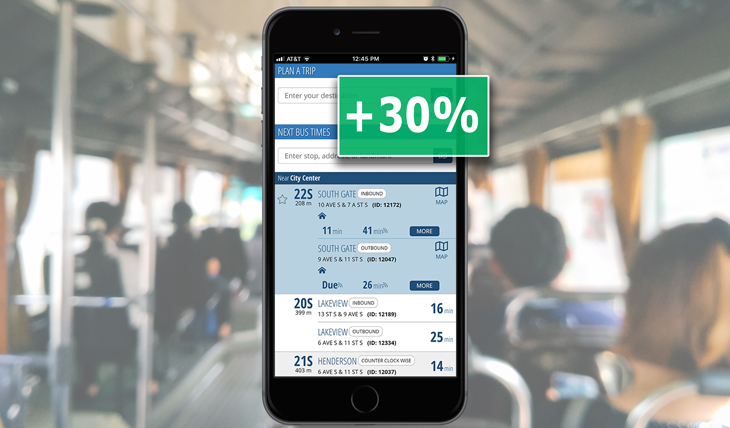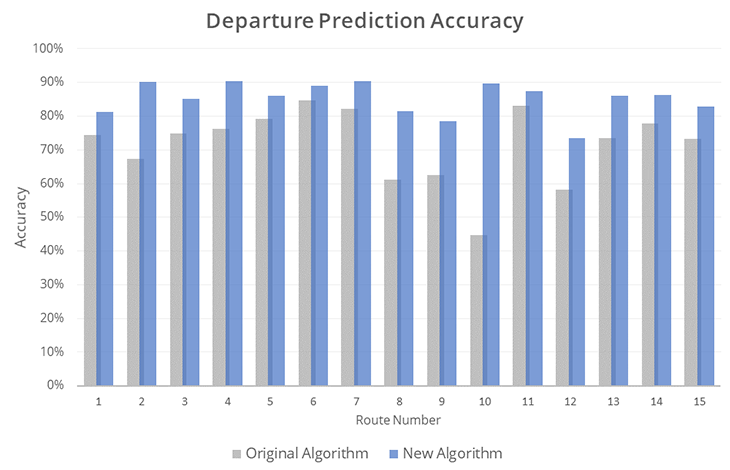Where’s My Bus? Enhancing Real-Time Transit Departure Predictions With Machine Learning

Historically, most prediction algorithms were based on simple linear interpolation algorithms that assumed the bus travelled at the same speed between stops. Newer algorithms took road speeds and time of day into account, but still had limited accuracy.
Advances in computer technology and widespread availability of data have now led to the invention of much more accurate algorithms powered by machine learning. Basically, machine learning is the practise of using algorithms to parse data, learn from it, and then make a determination or prediction about something in the world1.
Before we get to how we’ve incorporated machine learning in TripSpark solutions, let’s get a quick refresher on the benefits our software offers. TripSpark’s Fixed Route software consists of a suite of applications and passenger-facing apps that makes it simple for public transit agencies to plan the most efficient schedules, while giving their riders real-time information. Streets AVL lets dispatchers track where each of their vehicles are… also in real-time. This makes it very easy for call takers to confidently answer that all important question, “where’s my bus?”. Or for riders to answer the question for themselves using the MyRide passenger information app.
With regards to machine learning techniques, this has led to accuracy gains of 30% on average. That’s a significant reduction in the number of minutes riders spend waiting at bus stops every day. Less waiting means happier customers – that’s that the main goal of every transit agency, right?
Moreover, our new prediction algorithm accounts for:
- Historical Travel Time – if a bus is typically late at the same time on the same day every week, chances are that pattern will continue.
- Recent Travel Time – if traffic is slow between stops because of a lane reduction, chances are the current trip may be impacted by the same circumstances.
- Speed Changes – even if a driver leaves the terminal late, it doesn’t mean the bus will be late to arrive at every stop along the route.

At TripSpark, we are continuously moving forward with innovative ideas to enhance our software so that agencies and riders can enjoy benefits of accurate, real-time data.
References

